The CP List: 20 CPaaS Providers You Should Know
8x8, Mitel and Vonage are here. See who else made it and why.

The CP 20 is back, and this latest installment focuses on communications platform as a service (CPaaS), which is going mainstream, expanding beyond the core base of digital native companies, startups and developers, and into the enterprise segment.

451 Research’s Raul Castanon
CPaaS is a cloud-based platform that allows developers to add real-time communications features to their own applications without needing to build back-end infrastructure and interfaces.
The competitive landscape is changing rapidly, fueled by emerging providers now targeting the mainstream enterprise segment, as well as increasing M&A, which is allowing unified communications (UC) providers to expand their capabilities to CPaaS.
According to IDC, the global CPaaS market is expected to grow from $2 billion in 2017 to nearly $11 billion in 2022. CPaaS will continue to accelerate at a compound annual growth rate (CAGR) of 39.2% through 2022, it said.
Raul Castanon, 451 Research’s senior analyst of workforce collaboration, said M&A activity has spiked in the last two years, significantly influencing the competitive landscape, with seven CPaaS-related deals so far this year and a total of 14 last year, according to 451 Research’s M&A KnowledgeBase.
Looking for more? Check out our recently compiled lists of 20 top UCaaS providers and 20 top hosted PBX providers offering products and services via channel partners. |

AppSmart’s Tim Basa
“Cloud communications providers – including UC and contact center providers – are expanding into CPaaS with vendors such as 8×8, Sangoma and Voyant, following the lead of Vonage by targeting standalone CPaaS vendors,” he said. “These add to a growing number of vendors with CPaaS capabilities which includes vendors like Avaya, Alcatel-Lucent Enterprise and Mitel.”
Tim Basa, AppSmart‘s vice president of sales, said “we’re in a CPaaS hype cycle to be sure.”
“Many providers have sprung up to take advantage of API-driven environments,” he said. “What’s really interesting is that companies that were virtually unknown 24 months ago, Twillio [IPO in 2016], Nexmo [aquired by Vonage], for example, are top of mind in many circles today. Also, niche players like ZipWhip and MessageBird are interesting.”
Michael Brandenburg, industry analyst at Frost and Sullivan, said he can’t think of a market that’s been more M&A hungry.

Frost and Sullivan’s Michael Brandenburg
“UCaaS, and even SIP trunking companies, have merged over the years, and CPaaS is the next frontier,” he said. “8×8-Wavecell is really the acknowledgement of the need for programmability within all business phone numbers. Vonage’s acquisition of Nexmo really set the tone for what a lot of the UCaaS providers are looking at how to respond to that. They’ve really rebooted what it meant to be a UCaaS provider in adding that API layer, and then going through the effort of retooling their UCaaS solution to release an application on top of that. That programmable platform in my mind has really changed the game that’s visionary.”
Based on feedback from analysts and industry experts, recent news reports and the 2019 Frost and Sullivan CPaaS Radar Report, we’ve compiled a list, in alphabetical order, of 20 CPaaS providers that are making the most of the current competitive landscape and charting success. The list offers a mix of well-known providers as well as lesser-known companies that are making big strides in CPaaS.
2600Hz
 Castanon said 2600Hz is a standalone CPaaS provider worth keeping an eye on. It offers a white label, multitenant cloud-based telephony platform designed to simplify how businesses sell, deliver and manage communication services.
Castanon said 2600Hz is a standalone CPaaS provider worth keeping an eye on. It offers a white label, multitenant cloud-based telephony platform designed to simplify how businesses sell, deliver and manage communication services.
8×8
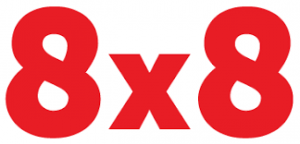 Brandenburg said Wavecell gives 8×8 a “jump-start into the CPaaS space.” 8×8 acquired the Singapore-based CPaaS provider for about $125 million in cash and stock. The purchase gives 8×8 an entry into the global CPaaS market, and is an expansion of its cloud business from UCaaS and CCaaS.
Brandenburg said Wavecell gives 8×8 a “jump-start into the CPaaS space.” 8×8 acquired the Singapore-based CPaaS provider for about $125 million in cash and stock. The purchase gives 8×8 an entry into the global CPaaS market, and is an expansion of its cloud business from UCaaS and CCaaS.
(continued on next page)
Alcatel-Lucent Enterprise
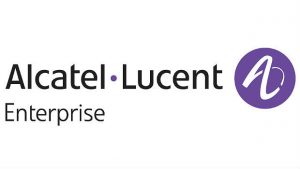 Brandenburg said Alcatel-Lucent Enterprise‘s Rainbow platform is letting its customers build on their existing on-premises and cloud investments into its PBXes and cloud-hosted solutions, and letting them embed communications into websites and applications, and “they’re doing a lot of interesting things there, too.”
Brandenburg said Alcatel-Lucent Enterprise‘s Rainbow platform is letting its customers build on their existing on-premises and cloud investments into its PBXes and cloud-hosted solutions, and letting them embed communications into websites and applications, and “they’re doing a lot of interesting things there, too.”
AT&T
![]() Brandenburg said AT&T jumped into CPaaS this year with its partnership with Ribbon Communications.
Brandenburg said AT&T jumped into CPaaS this year with its partnership with Ribbon Communications.
“It’s amazing to think of AT&T as a new entrant into the market – into any market – but they launched earlier this year and there’s some definite early interest, and we’re going to hear more about that soon,” he said. “But the fact that they kind of decided to partner for a platform and then build on it, rather than trying to take the years or even longer for a tier 1 carrier to build that kind of solution in house, is pretty telling in the space.”
(continued on next page)
Avaya
 Brandenburg said Avaya is “very interesting” in CPaaS. Formerly Zang, Avaya’s OneCloud CPaaS is a public cloud service that offers APIs and applications as a service for communications and collaboration.
Brandenburg said Avaya is “very interesting” in CPaaS. Formerly Zang, Avaya’s OneCloud CPaaS is a public cloud service that offers APIs and applications as a service for communications and collaboration.
“Looking forward, the ability to address the requirements of the enterprise segment will be critical for success,” Castanon said. “This is not an easy task, and will require developing and training a strong channel partner network, who play a critical role for sales and marketing. Targeting the enterprise will also require that vendors carefully articulate their value proposition in terms of the business problems that enterprises are looking to address.”
Bandwidth
 Brandenburg said “we’re definitely in a market where the pie is getting bigger,” and Bandwidth is among providers that have distinguishing characteristics.
Brandenburg said “we’re definitely in a market where the pie is getting bigger,” and Bandwidth is among providers that have distinguishing characteristics.
“Bandwidth is an emerging provider now targeting the mainstream enterprise segment,” Castanon said.
(continued on next page)
Brightlink
 Brightlink also is an emerging provider now targeting mainstream enterprises, and it recently announced a major update that bolstered its communications, Castonon said. Last month, Brightlink said it has seen a surge in demand for its CPaaS offering since launching its 2.0 platform in May.
Brightlink also is an emerging provider now targeting mainstream enterprises, and it recently announced a major update that bolstered its communications, Castonon said. Last month, Brightlink said it has seen a surge in demand for its CPaaS offering since launching its 2.0 platform in May.
Freespee
 An interesting emerging player in CPaaS is Freespee, a private company founded in 2009, Castanon said. Its CPaaS platform is designed as a comprehensive conversation cloud that enables consumers to talk to brands in real time, he said.
An interesting emerging player in CPaaS is Freespee, a private company founded in 2009, Castanon said. Its CPaaS platform is designed as a comprehensive conversation cloud that enables consumers to talk to brands in real time, he said.
(continued on next page)
IntelePeer
 Brandenburg said IntelePeer stands out and is among providers with distinguishing characteristics.
Brandenburg said IntelePeer stands out and is among providers with distinguishing characteristics.
“IntelePeer is positioned as a CPaaS 2.0 vendor, targeting enterprise use cases,” Castanon said.
Kaleyra
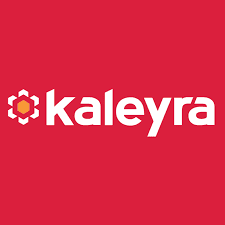 Castanon said Kaleyra is an emerging provider now targeting mainstream enterprises, and is making headway with finance and banking use cases. Through its platform, Kaleyra manages multichannel integrated communication services on a global scale, comprising messages, push notifications, email, instant messaging, voice services and virtual assistants.
Castanon said Kaleyra is an emerging provider now targeting mainstream enterprises, and is making headway with finance and banking use cases. Through its platform, Kaleyra manages multichannel integrated communication services on a global scale, comprising messages, push notifications, email, instant messaging, voice services and virtual assistants.
(continued on next page)
MessageBird
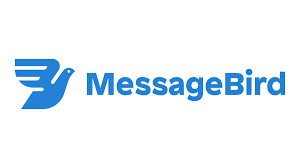 Castanon said MessageBird is a standalone CPaaS provider “worth keeping an eye on,” and Basa said it’s an “interesting niche player.” More than 15,000 global customers use MessageBird to solve their communication challenges by routing important messages and calls on their behalf.
Castanon said MessageBird is a standalone CPaaS provider “worth keeping an eye on,” and Basa said it’s an “interesting niche player.” More than 15,000 global customers use MessageBird to solve their communication challenges by routing important messages and calls on their behalf.
(continued on next page)
Mitel
 Castanon cited Mitel is a noteworthy vendor with CPaaS capabilities.
Castanon cited Mitel is a noteworthy vendor with CPaaS capabilities.
“A successful CPaaS provider must deliver on the expectations they set for the end-user client,” Basa said. “There’s a lot of hype and bold promises in the space. Sometimes clients feel like they are sold products and services that are not proven, or vetted thoroughly prior to the sale and implementation. Execution, customer experience and delivering desired outcomes will lead to success.”
(continued on next page)
Nextiva
 At this month’s Nextiva NextCon 2019, Carl Katz, Nextiva’s vice president of channel sales for North America, said CPaaS is the “newer technology allowing us to create solutions on one pane of glass without integrations, and keeping the customer stickier and solidifying the partner annuity for the long term.”
At this month’s Nextiva NextCon 2019, Carl Katz, Nextiva’s vice president of channel sales for North America, said CPaaS is the “newer technology allowing us to create solutions on one pane of glass without integrations, and keeping the customer stickier and solidifying the partner annuity for the long term.”
“It’s a critical time right now for our partners, our customers and suppliers to come out with this kind of solution in order to change the conversation and really find that solution for customers,” he said. “We are differentiating ourselves because no one else has this unique technology and this insight with their customers, our customers’ customers, utilizing this business analytics and intelligence to give [partners] insight into their customers’ satisfaction and journey.”
(continued on next page)
Plivo
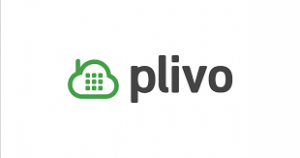 Castanon said Plivo is a standalone CPaaS provider worth keeping an eye on. Plivo’s infrastructure handles billions of voice calls and messages every year from businesses globally. More than 70,000 customers use Plivo to add voice calling and messaging capabilities to their web, mobile and desktop apps.
Castanon said Plivo is a standalone CPaaS provider worth keeping an eye on. Plivo’s infrastructure handles billions of voice calls and messages every year from businesses globally. More than 70,000 customers use Plivo to add voice calling and messaging capabilities to their web, mobile and desktop apps.
(continued on next page)
Ribbon Communications
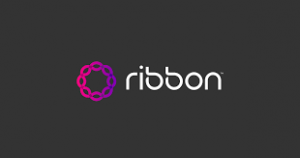 Brandenburg said Ribbon Communications is enabling service providers of all types.
Brandenburg said Ribbon Communications is enabling service providers of all types.
“There’s a pretty clear set of use cases today for developers and startups of why you would go with a CPaaS, and I think those are firming up in terms of the enterprise,” he said. “At the same time, the blessing of it is CPaaS can be you can do anything you want to do with an API [in] a CPaaS platform. It’s up to the enterprise to figure out exactly what they need.”
(continued on next page)
Telestax
 Brandenburg said Telestax, a Cisco solution partner, is doing some really interesting things enabling service providers at the tier 2 and 3 levels. Last week, Telestax announced enhancements to Message Exchange, its CPaaS solution for enabling text messages. Message Exchange now allows the sending and receiving of texts for Cisco Webex Teams. The company also unveiled new APIs for Cisco UC-One and an upgrade to the Telestax UC-One API console.
Brandenburg said Telestax, a Cisco solution partner, is doing some really interesting things enabling service providers at the tier 2 and 3 levels. Last week, Telestax announced enhancements to Message Exchange, its CPaaS solution for enabling text messages. Message Exchange now allows the sending and receiving of texts for Cisco Webex Teams. The company also unveiled new APIs for Cisco UC-One and an upgrade to the Telestax UC-One API console.
(continued on next page)
thinQ
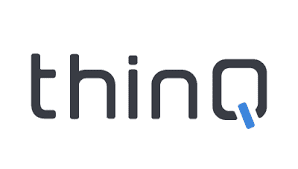 Brandenburg said another provider that’s emerging in CPaaS is thinQ.
Brandenburg said another provider that’s emerging in CPaaS is thinQ.
“By offering wholesale voice and messaging pricing, thinQ’s greatest strengths are cost savings, scale and support for partners of all sizes,” according to Frost and Sullivan’s CPaaS Radar Report. The company’s solution ensures that voice carriers, VoIP providers and enterprise firms can fully control their direct inward dialing numbers ordering and provisioning, as well as researching call quality issues without the need for opening help desk tickets.
(continued on next page)
Tropo
 Basa said Tropo, backed by Cisco, will continue to grow and take advantage of the Cisco clout and engineering knowledge. Tropo provides a cloud API platform that enables customers and developers to embed real-time communications within their applications.
Basa said Tropo, backed by Cisco, will continue to grow and take advantage of the Cisco clout and engineering knowledge. Tropo provides a cloud API platform that enables customers and developers to embed real-time communications within their applications.
(continued on next page)
Twilio
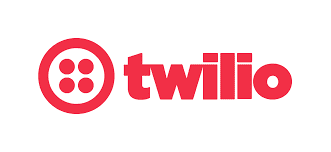 The de facto CPaaS market leader, Twilio earned its spot largely based on a strong record of innovation, Castanon said. It invests heavily in R&D, consistently raising the bar with a comprehensive and innovative portfolio. It almost singlehandedly created and defined the industry, but the landscape has changed significantly in the last two years, he said.
The de facto CPaaS market leader, Twilio earned its spot largely based on a strong record of innovation, Castanon said. It invests heavily in R&D, consistently raising the bar with a comprehensive and innovative portfolio. It almost singlehandedly created and defined the industry, but the landscape has changed significantly in the last two years, he said.
Twilio is definitely turning its focus to include large enterprises and “they’re getting some marquee customers there,” Brandenburg said.
(continued on next page)
Vonage
 Vonage is “absolutely bringing a new vision to both what it means to be a CPaaS and platform provider,” incorporating its UCaaS and CCaaS with those applications on top of the platform, Brandenburg said.
Vonage is “absolutely bringing a new vision to both what it means to be a CPaaS and platform provider,” incorporating its UCaaS and CCaaS with those applications on top of the platform, Brandenburg said.
Basa said Vonage, with Nexmo, is “certainly among the most proven in the space.”
Read more about:
AgentsAbout the Author
You May Also Like


